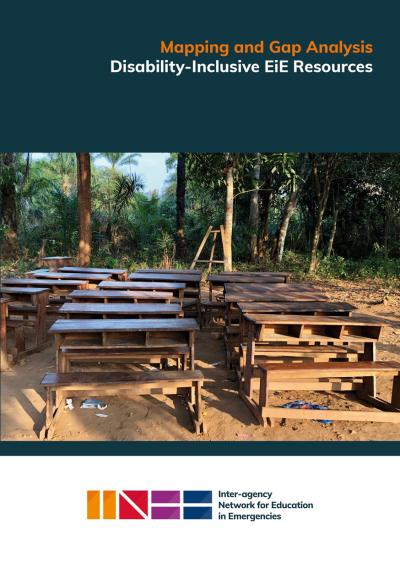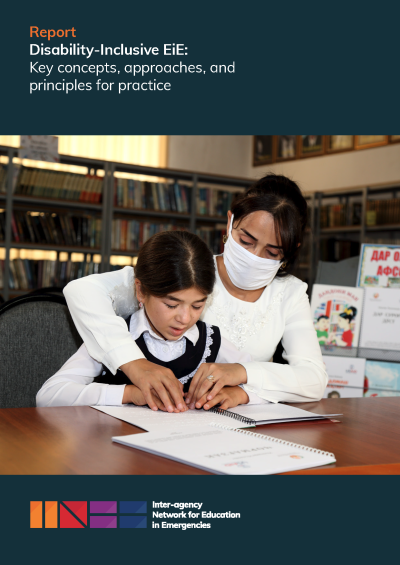Two New Resources on Disability-Inclusive EiE
We are thrilled to share with you two new resources on Disability-Inclusive EiE: 1. A Resources Mapping and Gap Analysis report and 2. Key concepts, approaches, and principles for practice!
 The Resources Mapping and Gap Analysis report compiles and analyzes the available resources, such as frameworks, policy and advocacy briefs, tools, research papers, and more that focus on the education and broader needs of learners with disabilities in emergencies and crisis-affected contexts.
The Resources Mapping and Gap Analysis report compiles and analyzes the available resources, such as frameworks, policy and advocacy briefs, tools, research papers, and more that focus on the education and broader needs of learners with disabilities in emergencies and crisis-affected contexts.
This mapping builds on the work of the INEE Inclusive Education Working (IEWG) Group by 1. collecting existing resources that specifically address the educational needs of learners with disabilities living in emergencies and crisis-affected contexts; and 2. identifying gaps in the availability of resources, in their content, and in their design. The report also offers recommendations for the design, development, and dissemination of future disability-inclusive EiE resources.
Click to view the detailed description and to download the Resources Mapping and Gap Analysis report, available in English.
***********************************
 The Key concepts, approaches, and principles for practice report builds on the Mapping and Gap Analysis report and other work of the INEE Inclusive Education Working Group (IEWG), which identified a lack of common understanding about disability-inclusive education, most notably in emergencies and crisis-affected contexts.
The Key concepts, approaches, and principles for practice report builds on the Mapping and Gap Analysis report and other work of the INEE Inclusive Education Working Group (IEWG), which identified a lack of common understanding about disability-inclusive education, most notably in emergencies and crisis-affected contexts.
This report defines and clarifies key concepts and terminology for disability-inclusive education in emergencies (EiE) and provides seven guiding principles. It is meant to be used as a companion piece to the INEE Minimum Standards, and to support stakeholders’ efforts to be more intentional in their design, implementation, monitoring, and evaluation of disability-inclusive EiE interventions. Although the principles address disability inclusion in education, many are also relevant for supporting the education of other marginalized or vulnerable learners in emergencies, including girls, refugee and displaced learners, and ethnic and linguistic minorities.
Click to view the detailed description and to download the Key concepts, approaches, and principles for practice report, available in English.
For more resources, opportunities, and information about inclusive education in emergencies, visit the Inclusive Education resources collection on the INEE website, and the IE related channels (#inclusive-education and التعليم-الجامع#) in the INEE Community of Practice regularly.
For further information about the INEE Inclusive Education Working Group initiatives, feel free to contact the INEE IE Coordinator, Myriam Jaafar, by sending an email to [email protected].



